Terrestrial analogue sites
Terrestrial analogue sites (also called "space analogues") are places on Earth with assumed past or present geological, environmental or biological conditions of a celestial body such as the Moon or Mars. Analogue sites are used in the frame of space exploration to either study geological or biological processes observed on other planets, or to prepare astronauts for surface extra-vehicular activity.
Definition
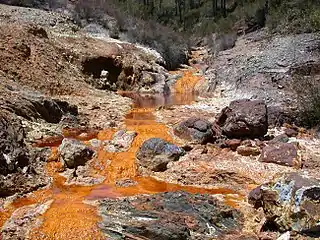
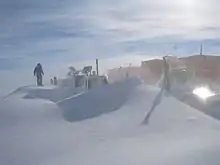
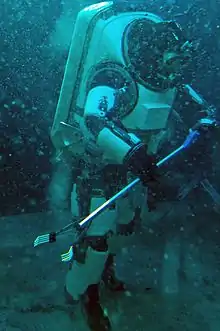
Analogue sites are places on Earth with assumed, past or present, geological, environmental or biological conditions of a celestial body. Analogue site studies are necessary because they help to understand geological processes (on Earth) which can be extrapolated to other solar system bodies in order to interpret and validate the data received from orbiters or planetary rovers. Analogue sites are also important for optimizing scientific and technological needs and exploration strategies in robotic or manned missions to the Moon or Mars.[2] The definition of space analogues is therefore rather vast, reaching from places on Earth that exhibit geologic or atmospheric characteristics which are close to those observed on other celestial bodies, to sites that are used for space mission simulations to test sampling or drilling equipment, space suits, or the performance of astronauts in reduced gravity.
Some sites are therefore suited to test instruments for exobiological research or to train sampling procedures for field explorations. Other sites offer an extreme environment that can be used by astronauts to prepare for the difficulties in future space missions.
Fidelity
An important notion in the evaluation of analogue sites is that of "fidelity", which describes the resemblance of the analogue to its extraterrestrial correspondent. Fidelity is used in comparative planetary science to express the analogy of a terrestrial site to a target extraterrestrial surface. This classification is possible based on various criteria such as geomorphology, geochemistry, exobiology or exploration conditions.
Geomorphology
Geomorphology is the scientific study of landforms and the processes that shape them. In terms of analogue sites, scientists search for locations on Earth that exhibit similar landforms such as can be found on exploration targets like the Moon, Mars or even asteroids and comets. The idea is to confront astronauts, robots or scientific equipment with sites that resemble in their geologic appearance those extraterrestrial surfaces. Examples are volcanic sites which resemble lunar terrain (regolith), polar locations and glaciers that can be compared to the poles of Mars or of Jupiter moon Europa, or terrestrial lava tubes which can also be found on the Moon or Mars.
Geochemistry
Geochemistry is the science that uses the principles of chemistry to explain the mechanisms behind major geological systems. The aspect of geochemistry is of importance for analogue sites when locations offer the possibility to test analysis instruments for future space missions (manned or robotic). Geochemical fidelity is also of importance for the development and test of equipment used for in-situ resource utilization. Examples for such analogue sites are terrestrial volcanoes that offer rocks similar to those found on the Moon or hematite concretions which can be found in Earth deserts and also on Mars (so-called "Blueberries").
Exobiology
Exobiology or astrobiology is the study of the origin and evolution of extraterrestrial life. In terrestrial analogues efforts are put on the identification of so-called extremophile organisms, which are life forms that live and survive in extreme conditions such as can be found on other planets or moons. The objective of this research is to understand how such organisms survive and how they can be identified (or their remnants).
Examples of exobiology analogue sites are the Rio Tinto in Spain, which hosts bacteria that can survive high temperatures and harsh chemical conditions, or black smokers in the deep sea that host colonies of life forms in high-pressure and high-temperature conditions. The cold dry hyperarid core of the Atacama desert is one of our closest analogues for Martian surface conditions and is often used for testing rovers and life detection equipment that one day may be sent to Mars.[3][4][5][6][7] Scientists can test at such analogue sites sampling equipment designed to search and identify lifeforms.
Exploration conditions
Another criterion to search for analogue sites are locations where the exploration conditions of future astronauts can be simulated. Future explorers of the Moon or Mars will have to handle various conditions, such as reduced gravity, radiation, work in pressurized space suits and extreme temperatures. Preparing astronauts for these conditions calls for training on sites that exhibit some of those conditions. The operations that can be simulated reach from living in isolation, to extra-vehicular activity (EVA) in reduced gravity to the construction of habitats. Examples for analogue sites that offer such exploration conditions are research stations at the poles or underwater EVA training as it is done at NEEMO by NASA, or at the Marseilles subsea analogue by COMEX.[8] Underwater analogue sites allow for the training of astronauts in neutral buoyancy conditions (such as is done in test pools at NASA, ESA or Star City in Russia) while operating on a natural terrain. Potential targets for such training are missions to the Moon and Mars, to test sampling, drilling and field explorations in 1/6th or 1/3rd of Earth's gravity, or asteroids, and to test anchoring systems in microgravity.
History of the space analogues
The notion of space analogues is not new. NASA has used such sites for a long time to train its astronauts for space missions. The following data are taken from the official website of NASA.[9]
The first analog mission was undertaken in 1997 in Arizona. Since then, NASA leads annual missions there to evaluate and test EVAs and outpost systems and operations. This site was chosen to test the materials in a desolate environment with rugged terrain, dust storms, extreme temperatures...
In the same year, the Haughton-Mars Project (HMP) was started on Devon Island in the Arctic. Since then, 14 missions have been conducted there to test technology and operations in a remote, extreme environment and conduct science research on the Mars-like terrain.
In 2001, NASA conducted the mission named NEEMO near Florida, 62 feet (19 m) underwater, that was supposed to be a simulation for six aquanauts living in a confined space. It was also the way to test the exploration equipment in an extreme and isolated environment. Since 2001, 14 missions have been undertaken there in a multi-organizational environment.
Since 2004, two-week missions are conducted every summer in Pavilion Lake in Canada. This analogue site allows astronauts to train in searching for evidence of life in an extreme environment with reduced-gravity conditions. This is an international and multi-organizational project conducted underwater.
The last analogue site used by NASA is at Mauna Kea on the Big Island of Hawaii. Two missions have already been undertaken, and another one was expected in 2012. This project was led to test technologies for sustaining human exploration on desolate planetary surfaces like the Moon or Mars.
Keen interest for space analogues has emerged through the student community, the 2017 NASA Ames Grand Prize Winning entry Anastasi, explores the possibility of an underwater settlement as a preliminary to space settlement infrastructure.
Objectives
The history of the use of terrestrial analogues shows the importance attached to using analogue sites in validating spatial technologies and scientific instruments. But analogue sites also have other uses:
Training
Space analogues can help to train personnel in using technologies and instruments, and in knowing how to behave with a spacesuit. Thus two types of analogue sites exist: underwater sites and surface sites.
- Underwater sites simulate a reduced-gravity environment by compensating weight by the Archimedes' principle, thus simulating zero gravity or reduced gravity (lunar gravity, for example).
- Surface sites serve to train astronauts to walk and move within a spacesuit, and to test the Mars Exploration Rover (for example). Expeditions to surface sites also help teach geology to astronauts, who mostly trained as pilots.
Exobiology
Space analogues may have potential similarities to environments for exobiology. In some places on Earth the conditions allow only certain types of organisms - extremophile organisms - to live.
Currently used space analogues
Following table lists currently used space analogues on Earth.
| Location name | Coordinates (decimal) | Description | Geomorphological Fidelity | Geochemistry Fidelity | Exobiological Fidelity | Exploration Conditions Fidelity |
|---|---|---|---|---|---|---|
Mars Desert Research Station, US  Mars Desert Research Station Mars Desert Research Station (the United States) |
38.406458, -110.791903 | Desert located in Utah close to the road 24 at 11.6 km from Hanksville. Disposes of a space habitat simulator. The research station, a Mars Society's station, consists of three buildings, the Habitat, the Greenhab, the Musk Mars Desert Observatory and a remotely located Engineering Support Equipment Area. | Sand Rocky ground with dust devils |
Marine shales,coals, sulfates, carbonates and quartz rocks |
Extremophile organisms (drought and high temperatures) |
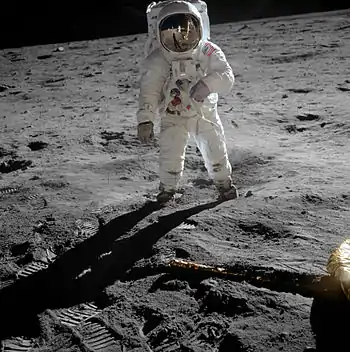 Surface EVA Surface EVAEVA in terrestrial gravity. |
Devon Island, Canada  Haughton impact Crater Haughton impact Crater (Canada) |
75.383333, -89.666667 | Crater located on the Devon island, the Haughton Crater resembles the Mars surface in more ways than any other place on Earth. It is an international and multidisciplinary site where temperatures are cold. Need of a boat to reach the island and the crater. Mars-like landscape of dry, unvegetated, rocky terrain and extreme for testing planetary exploration strategies, such as safety environmental conditions. HMP (Haughton Mars Project) undertaken by NASA since 1997. | Analogy with Shackleton Crater, a 19-km-wide impact crater at the Moon's South Pole Loose rock, craters, ground ice, rock glaciers, ancient hot springs and lakes, gullies, sapping valleys, valley networks, and canyons. |
Quartz rocks, shales and allochthonous breccia |
Permafrost (evidence of water in the past) Permafrost |
 Surface EVA Surface EVAEVA in terrestrial gravity. |
Svalbard, Norway 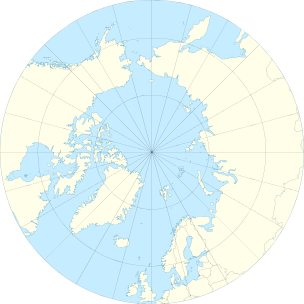 Svalbard Svalbard (Arctic) |
78.00, 16.00 | Located in Arctic, the environmental and topological geography are very close to Mars. This site is located in a volcanic region with very low temperatures. The Arctic Mars Analog Svalbard Expedition (AMASE) was untertaken by NASA since 2003. | Red sandstone Rocky ground, rough field, rock glaciers, volcanic center, hot springs,perennial rivers, gaps and folds |
Volcanic rocks (basalt) Shale |
Extremophile organisms (extreme temperatures) |
 Surface EVA Surface EVAEVA in terrestrial gravity. |
Rio Tinto, Spain 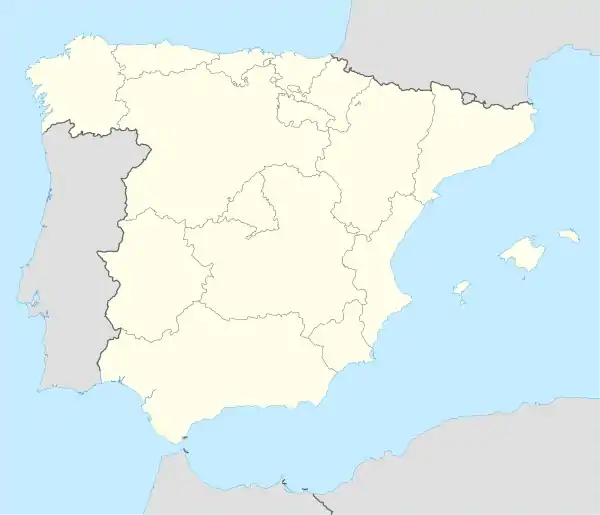 Rio Tinto Rio Tinto (Spain) |
37.40396, -6.33576 | Located in Spain, this desert crossed by the river Rio Tinto has an environmental and topographical geography close to that of Mars. There is no vegetation, and temperatures are between 10 °C and 20 °C, which allows a certain stability in temperature. This site is very easy to reach, thanks to its proximity with a big road and a town. | Red sandstone Meridiani Planum and rocky ground | Iron (pyrite) and sulfide minerals | extremophile aerobic bacteria (extreme environment), chemolithotrophic microorganisms |
 Surface EVA Surface EVAEVA in terrestrial gravity. |
McMurdo Dry Valleys, Antarctica 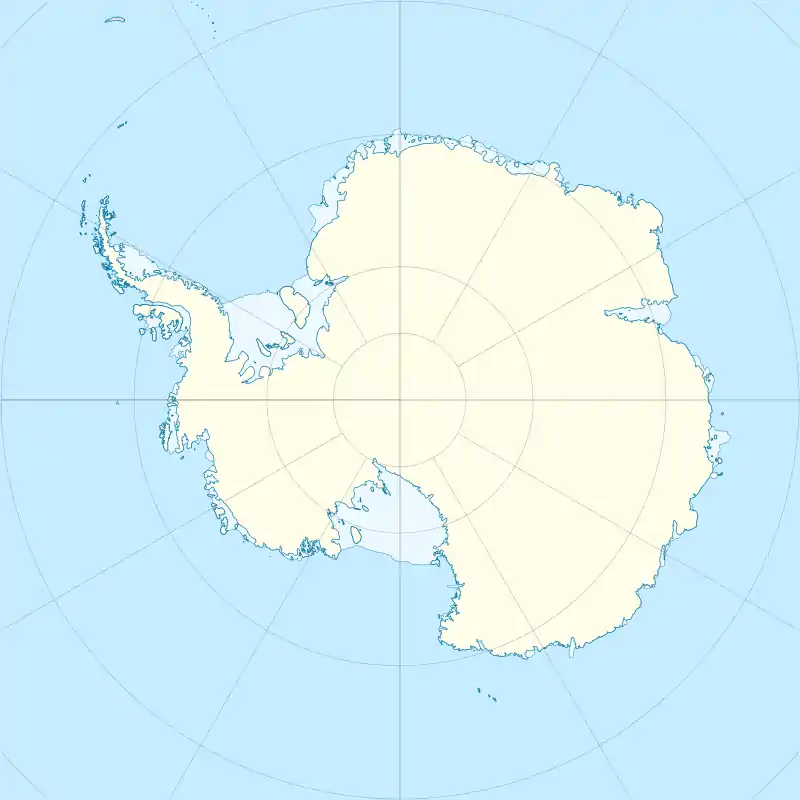 McMurdo Dry Valleys McMurdo Dry Valleys (Antarctica) |
-77.466667, 162.516667 | Located in Antarctica, those valleys are snow-free valleys. They are located close to the McMurdo base, which is an advantage for the facilities. The environment is extreme because of the very low temperatures (from -50 to 8 °C). This site has been used by the NASA from January 2008 to February 2009 to test an inflatable habitat in an extreme environment. | Dry and cold Dry, cold, rocky ground and valleys | granite Iron |
Endolithic photosynthetic bacteria (extreme temperatures) Anaerobic organism (metabolism based on iron and sulfur) |  Surface EVA Surface EVAEVA in terrestrial gravity. |
Atacama desert, Chile 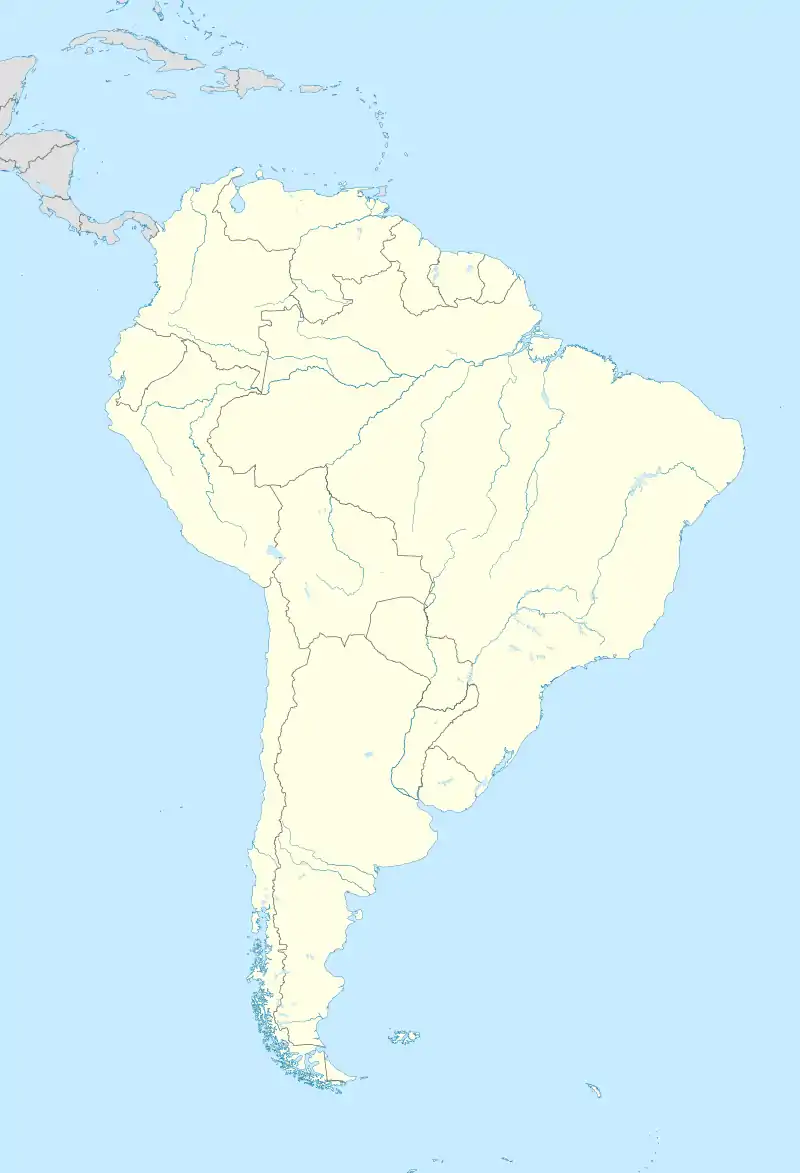 Atacama Desert Atacama Desert (South America) |
-24.5, -69.25 | Located in Chile, this desert is the Driest and oldest Desert on Earth. Characterized by different environments that differ in the amount of water available for life (Atacama Coastal Range, the hyperarid core of the Atacama and the Andes Mountains) the hyperarid core contains some of the driest sites on Earth, with some, like María Elena South, been as dry as Mars. The Atacama Desert is also characterized by its highly saline soils, rich in highly oxidizing species such as perchlorates, as well as by being the most UV irradiated region on Earth. | sand Otherworldly appearance of the soil |
Perchlorates |
Extremophile organisms (extreme temperatures) |
 Surface EVA Surface EVAEVA in terrestrial gravity. |
Meteor Crater, US  Meteor Crater Meteor Crater (the United States) |
35.027222, -111.0225 | This crater is a private site that belongs to the Barringer's Family. It is a well-known crater but it access to the site requires to pay a tax to the family. Its location in Arizona near the Highway 40 implies that it is very easy to reach with a truck. It is located at 69 km from Flagstaff. During the 1960s, NASA astronauts trained in the crater to prepare for the Apollo missions to the Moon. | Sandstone Rocky ground |
Dolomite, coesite and stishovite |
Extremophile organisms (extreme temperatures) |
 Surface EVA Surface EVAEVA in terrestrial gravity. |
Kīlauea Volcano, US 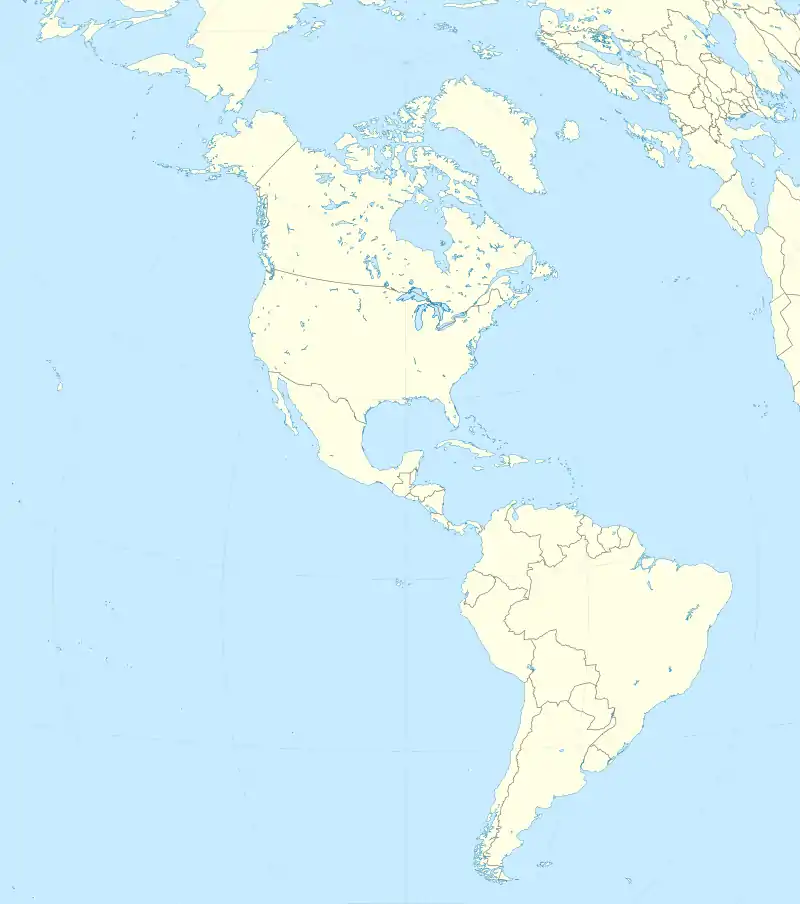 Kilauea Volcano Kilauea Volcano (America) |
19.425, -155.291944 | The Kilauea Volcano is located on the Big island of Hawaii. This island is composed of different mountains due to the volcanic activity in this region. The climate is tropical and temperatures are cool and stable (from 10 to 20 °C). Because of the tropical climate, it rains between November and April. The NASA has already tested some technologies on the neighbouring site of Mauna Kea. | Volcanic dust Volcanic center and folds |
Volcanic rocks (basalt) Silica |
Extremophile organisms (extreme environment) |
 Surface EVA Surface EVA EVA in terrestrial gravity. |
Sudbury Crater, Canada  Sudbury Crater Sudbury Crater (Canada) |
46.6, -81.183333 | Located in Ontarion (Canada), this crater has a particularity: in its center there is a town called Greater Sudbury. Temperatures in this region are between -5 and 15 °C. This site is very easy to reach and the proximity with the town implies that it is easy to deploy teams there. | Rocky ground |
Pseudotachylite Nickel and metals |
 Surface EVA Surface EVAEVA in terrestrial gravity. | |
Teide National Park, Spain  Teide Volcanic Park Teide Volcanic Park (Africa) |
28.263, -16.616 | Located on the island called Tenerife that belongs to Spain. The site itself belongs to the national park which is composed of two volcanoes. The Teide National Park is a well-known park and well-preserved and the temperatures are cool (between 10 and 30 °C). | Rocky ground, gaps and folds |
Volcanic rocks (basalt and phonolite) Same rocks on Mars and on the site |
Test of ultraviolet light to detect life on Mars |
 Surface EVA Surface EVAEVA in terrestrial gravity. |
LMAS (Lunar Mars Analogue Site) Sainte-Rose, Réunion, France  Sainte-Rose Sainte-Rose (Africa) |
-21.243622, 55.713751 | Located in the Reunion (French island close to Madagascar), the site of Sainte-Rose includes the volcano "Piton de la Fournaise". It is close to the town, east of the island. The volcano is still active. | Plain of sands (Moon-like hills) Volcanic center, gaps and folds |
Volcanic rocks (basalt) Iridium |
 Surface EVA Surface EVAEVA in terrestrial gravity. | |
Concordia Station, Antarctica  Concordia station Concordia station (Antarctica) |
-75.1, 123.558 | Located in Antarctica, the Concordia Station is a Franco-Italian research center. Its location is very far from any other station (the closest station is about 550 km—Russia's Vostok Station). On the site, temperatures are freezing cold (from −82 °C to −48 °C). This station is operational since 2005 and is used to study medicine, glacology and astronomy. | Ice, meteorite dust |
Extremophile organisms (extreme temperatures) |
 Surface EVA Surface EVAEVA in terrestrial gravity and extreme environment. | |
Pavilion Lake, Canada  Pavilion Lake Pavilion Lake (Canada) |
50.86502, -121.737442 | Located in Canada, this site is an underwater space analogue used by different nations (Canada and USA). The project undertaken there is entitled the Pavilion Lake Research Project. This is an international and multidisciplinary project that exists since 2004 every summer. The main mission of this project is to learn from and practice doing science field activities, including searching for evidence of life, in an extreme environment with reduced gravity conditions.[9] The advantage of the lake is that there is no swell and a calm water what makes simulation safer and can be used util 65 meters deep. | Sand Rocky ground |
Carbonate |
Microbialities |
 Surface EVA Surface EVAEVA in reduced, zero or negative gravity. |
Gros Morne National Park, Canada  Gros Morne National Park Gros Morne National Park (Canada) |
49.621667, -57.752778 | Located on an island in Canada, this site belongs to the Gros Morne National Park, which is a well-known park. The park is quite isolated and far from any town. Temperatures are between -13.3 and 19.6 °C. | Rocky ground, rough field and glacial valleys |
Oceanic crust (basalt and gabbro) Quartzite |
 Surface EVA Surface EVAEVA in terrestrial gravity. | |
Laguna des Tirez, Spain  Laguna des Tirez Laguna des Tirez (Spain) |
39.538238, -3.357825 | Located in Spain, this site is a lagoon with a depth of 20 meters and is at a distance of 110 km from Madrid. Temperatures there are cool (-0,4 to 25,8 °C) and the site is near the town of Villacañas and is easy to reach thanks to the roads around. | Rocky ground and hot springs |
Iron, sulfates and magnesium |
Acetoclastic Sulfate-Reducing Bacteria and Hydrogenotrophic Methanogenic Archaea |
 Surface EVA Surface EVAEVA in reduced, zero or negative gravity. |
NEEMO, US  NEEMO NEEMO (the United States) |
24.95, -80.453611 | Located in the US, at 5,6 km off Key Largo in Florida, this site is an underwater space analogue and is 19 meters deep. NEEMO, which means NASA Extreme Environment Mission Operations, is a project undertaken by the NASA to allow six aquanauts to live and worke in a cramped, submerged laboratory to simulate crewed exploration in a hostile environment, with support from surface infrastructure. This mission exists since 2001. | Sand |
 Surface EVA Surface EVAEVA in reduced, zero or negative gravity. | ||
Marseille Bay, France  Terrestrial analogue sites (France) |
43.263956, 5.330772 | Underwater analogue sites for the simualtion of surface EVA in reduced gravity. | Sand Rocky ground, vertical cliffs and caves |
 Surface EVA Surface EVAEVA in reduced, zero or negative gravity. | ||
See also
References
- Similar extremophile archaea are Archaeal Richmond Mine Acidophilic Nanoorganisms.
- Léveillé Richard, Validation d'instrumentation spatiale dans les sites analogues, Canadian Space Agency
- Parro, Victor; de Diego-Castilla, Graciela; Moreno-Paz, Mercedes; Blanco, Yolanda; Cruz-Gil, Patricia; Rodríguez-Manfredi, José A.; Fernández-Remolar, David; Gómez, Felipe; Gómez, Manuel J.; Rivas, Luis A.; Demergasso, Cecilia; Echeverría, Alex; Urtuvia, Viviana N.; Ruiz-Bermejo, Marta; García-Villadangos, Miriam; Postigo, Marina; Sánchez-Román, Mónica; Chong-Díaz, Guillermo; Gómez-Elvira, Javier (2011). "A Microbial Oasis in the Hypersaline Atacama Subsurface Discovered by a Life Detector Chip: Implications for the Search for Life on Mars". Astrobiology. 11 (10): 969–996. Bibcode:2011AsBio..11..969P. doi:10.1089/ast.2011.0654. ISSN 1531-1074. PMC 3242637. PMID 22149750.
- The Planetary and Space Sciences Research Institute, The Open University (5 December 2012). "TN2: The Catalogue of Planetary Analogues, section 2.6.1" (PDF). Under ESA contract: 4000104716/11/NL/AF.
- Microbial oasis discovered beneath the Atacama Desert, PUBLIC RELEASE: 16 FEB 2012, FECYT - SPANISH FOUNDATION FOR SCIENCE AND TECHNOLOGY
- "Mars rover tests driving, drilling and detecting life in Chile's high desert". Nasa Astrobiology Magazine. Mar 17, 2017.
- "NASA Tests Life-Detection Drill in Earth's Driest Place". NASA Press Release. February 26, 2016.
- Weiss; et al. (2012). "Simulation and preparation of surface EVA in reduced gravity at the Marseilles Bay subsea analogue sites". Planetary and Space Science. 74 (1): 121–134. Bibcode:2012P&SS...74..121W. doi:10.1016/j.pss.2012.06.022.
- NASA's analog missions, http://www.nasa.gov/pdf/563511main_NASA-Analog-Missions-06-2011_508.pdf